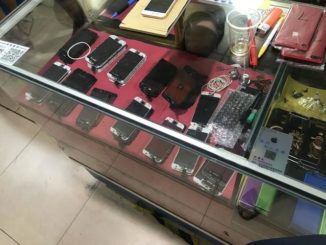Shanzhai, when translated literally, it means “mountain village”, in recent years, the phrase has been fueled with new meaning of its own. Now it refers to the counterfeiting of trademarked brands, most commonly seen are in consumer goods, hardware, industrial products, etc.
In 2016, a speech by Alibaba founder Jack Ma concerning counterfeiting problems in China has triggered the anger of international brands and brought Shanzhai culture into spotlight. “The problem is that the fake products today, they make better quality, better prices than the real products, the real names.”
For many years, Shanzhai culture in China’s manufacturing industry has been publicly condemned by international brands for intellectual property infringements, while the advantages of Shanzhai have often been dismissed. WEIRD has published a four-part documentary on Shanzhai culture in the electronic manufacturing hub of Shenzhen, which has intrigued a great number of contradictory arguments. Though stance of the tech magazine is unclear, Jack Ma’s comment about better quality and more affordability of Shanzhai products is cited into the discussion, endorsed not only by Shanzhai manufacturers but also foreigner investors.
The documentary takes a new approach to Shanzhai products as the easy affordability has granted a wider public access to latest technology, making Shanzhai manufacturers modern Chinese “Robin Hood”.
Inexhaustible debates have been intrigued towards above allegations especially in moral perspective. However, the most challenging insight about Shanzhai culture is how it has shaped a completely different ecosystem in China electronics manufacturing.
In the west, manufacturers and developers usually take on delegated, well defined jobs as the tech industry is quite monopolistic, while in China with the prevailing of Shanzhai norms, the boundary between Shanzhai manufacturers and designers is unsettled. Usually manufacturers operate out of small workshop and take on the duties of design at the same time.
In Shanzhai market structure, there are fewer bureaucratic constraints in new products developments, allowing free flowing of skills and market information, more responsive to market demands.
At the very beginning, Shanzhai manufacturers profit from making cheap knock offs from the real brands. With increasing demand, hybrid gadgets with self developed parts are also produced.
According to WIRED documentary, the high level of skills of Shanzhai products is usually underestimated when it comes to improved technical aspects like re-configuration, refining design, enhanced functions, etc.
The vital part of Shanzhai culture lies in how the key players view the sharing of techniques. In Shenzhen, open ecosystem, also known as “Gongmo(公模)”, some skillful companies have invested most resources designing and creating products which are called “Gong Mo(public moulds/open designs)” to be widely used in manufacturing companies in China. They’re used directly, or may change and add some further functions. Public moulds not only cuts off time in designing, but also bring businesses together to cut down initial developing expenses.
In the west, patents are regarded as the ultimate tool to intellectual property, while in China Shanzhai culture advocates the sharing of skills and techniques in an open market environment. As brands realize that they can be easily replaced by their competitors, they strive to leap forward before their products are copied.
Shanzhai culture has also turnt Shenzhen markets into a cruel battleground and motivated electronic companies to achieve enhanced quality, faster delivery and affordability.
Without doubt, intellectual property laws should be respected and we’re not an advocate of Shanzhai culture that is deemed as copying in western culture. However, it could be a hindrance to leap forward in an environment where innovators are too comfortable with patent systems. It will be hard for them to embrace a survival-oriented open ecosystem.



Leave a Reply